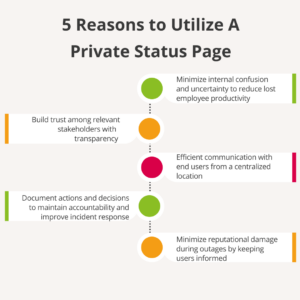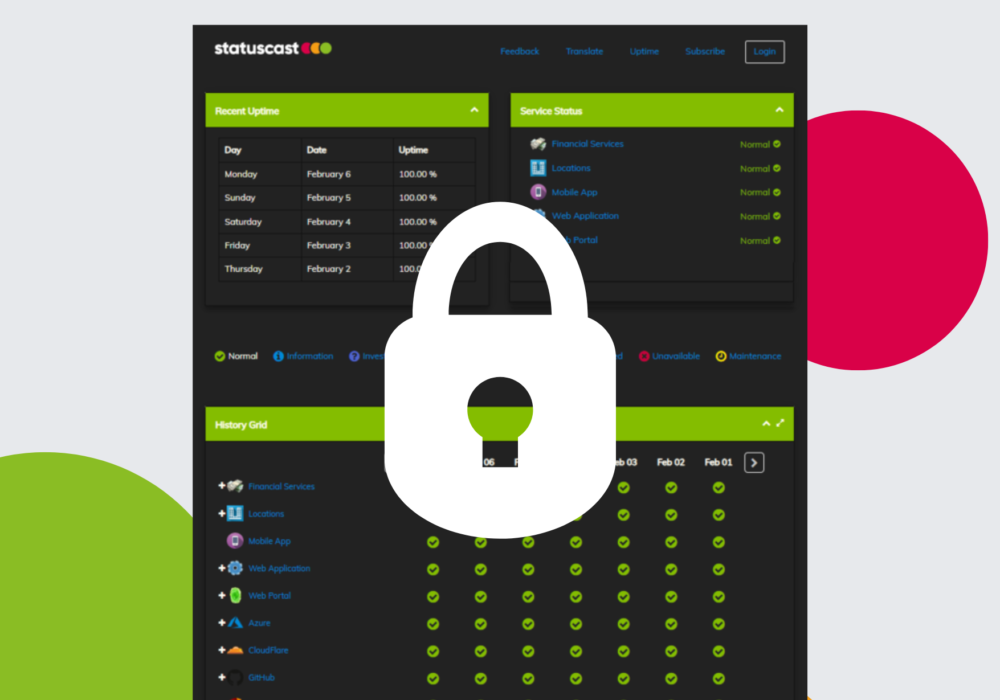The IT Team for a large organization plays a crucial role in ensuring the smooth operation of the company’s technology infrastructure, hence securing a robust system status management. One important aspect of their job is incident management, which involves identifying, assessing, and resolving issues that arise with the technology systems. IT teams utilize status pages to interface with end-users in order to inform them of system status, downtime and maintenance. Most status pages are public by default, and offer unrestricted access to a company’s service status. Whereas private status pages utilize permissions based access to protect sensitive information, while keeping relevant users optimally informed.
Having private pages is an essential part of an effective incident management process and policy. Here are the top five reasons why:

Lost employee productivity: One of the biggest costs of IT outages is lost employee productivity. A private status page allows the IT team to keep stakeholders informed about the sensitive status of ongoing incidents and the actions being taken to resolve them. This level of transparency helps to minimize confusion and uncertainty in internal communication among employees and partners, which helps to reduce resource and productivity loss.
Transparency: A private status page allows the IT team to keep only the relevant stakeholders informed about the status of ongoing incidents and the actions being taken to resolve them. This level of transparency is important for building trust with stakeholders and maintaining a positive reputation for the IT team.
Communication: A private status is the backbone of internal incident communication that organizations count on when services go down. Configured audience groups and escalation policies cut through the noise and ensure that the right people are optimally informed. This helps to reduce confusion and keep the right people informed.
Accountability: A private status page allows the IT team to document their actions and decisions during an incident. This documentation establishes accountability, identifies areas for improvement, and creates a feedback loop to improve an organization's future incident response.
Reputation management: A private status page allows a private status monitor for the IT team to proactively manage the organization’s reputation during an incident. By keeping stakeholders informed and maintaining transparency throughout the incident, the IT team can minimize any damage to the organization's reputation.
Leveraging a private status page is an essential part of any effective incident management role and process for a large organization’s IT team. It reduces lost employee productivity with transparent communication and protects organizational reputation when infrastructure goes down. This ultimately leads to a more efficient, effective, and reliable incident management process, and ultimately, a more successful organization. See what's possible with a status page from some of our customers.






